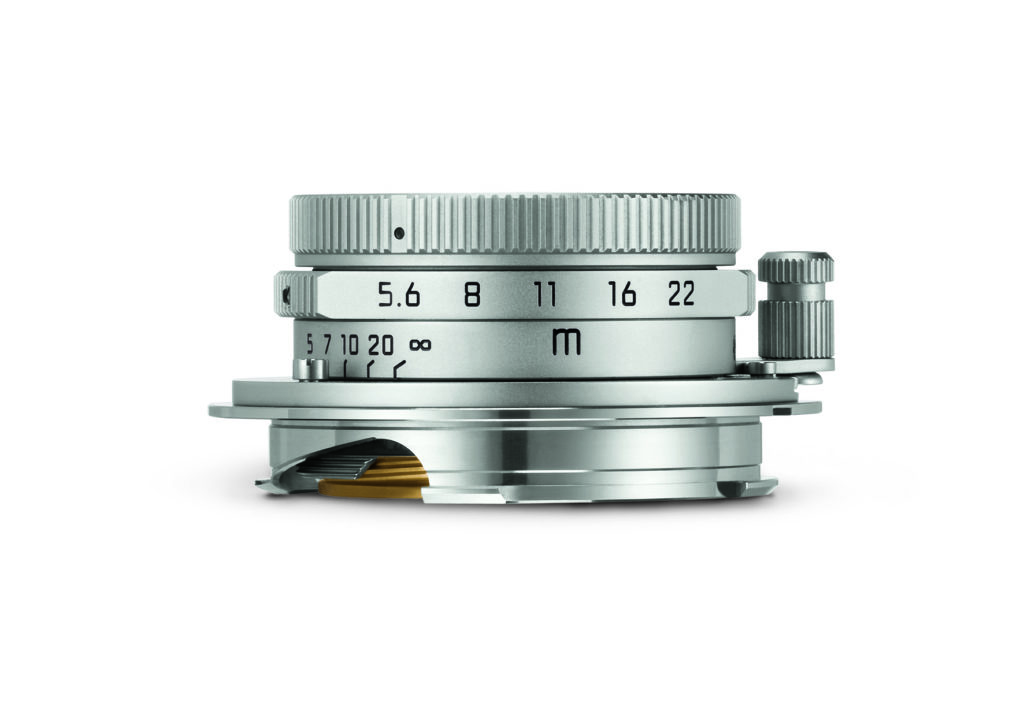There is a thin line between innovation and disruption where art and creativity come together and mingle with technological advancements to enhance the outcome of human innovation. Often times, the process behind developing new innovations come from within, observing the evolution and previous experiences that led to breakthrough moments in history. At Leica, we are proud to say that after many years behind the innovation of an entire industry, we continue to spearhead the development of new products based on years of heritage, aesthetics and technology. For this occasion, we gathered with two Leica innovators, designer Christoph Gredler and director of product management, Daniel Stefan, to talk about the process of digging into Leica’s history and heritage, in order to bring to life a truly unique masterpiece of innovation, the Leica Summaron-M 28mm f/5.6.

What is the reason that you are coming up with a new version of a historic lens?
Stefan Daniel: We see our customers using many many different lenses on their cameras, not only out of the actual Leica M lens range, but also vintage lenses. The main reason is that they want to create a specific, true look in the images which hardly can be imitated by a digital treatment.
Why did you choose the Leica Summaron-M 28mm f/5.6?
Stefan Daniel: The original lens has many friends because of its particular rendering. Medium contrast combined with nice resolution of fine details and quite a bit of vignetting is the signature of this unique lens. In addition, it is going to be the smallest Leica lens available for M cameras; together with large depth of field it is perfectly suitable for spontaneous street photography “from the hip”.
Initial scribbles and design drawings of the lens are wonderful to observe. How has the design process evolved within Leica?
Christoph Gredler: The lens was developed in a very close cooperation with our engineers, the main aim was to preserve the optical properties and built quality and of the original lens. At the same time, we did not just want to copy its design to make it a collector’s re-edition, but to combine today’s design aspects with the classic form factor. Design had a supportive role in this process, showing this precision and perfectionism also in the design is of high importance.
 Heritage meets innovation. The Leica Summaron-M 28mm f/5.6 is based a more classic version, originally available between 1955-1963. How was the creative and design process structured in order to achieve this complex and highly detailed lens?
Heritage meets innovation. The Leica Summaron-M 28mm f/5.6 is based a more classic version, originally available between 1955-1963. How was the creative and design process structured in order to achieve this complex and highly detailed lens?
Christoph Gredler: The newer lenses have a simpler design language, more and more reduced to the essentials – we tried to apply this approach in a very sensitive way to the Summaron-M 28mm lens, still keeping the original character and proportions of the lens. A certain complexity, especially in terms of lettering is needed to keep this authentic design.
Usually, a large team is involved in the creation and execution of a project like this one, who else is part of the team and do you take into consideration customer feedback and ideas?
Every design is the result of a close cooperation in between engineering, product management and design. Not only customer feedback but also specialist advices are taken on board in a project like this.
The design of the lens hood reminds of the beginnings of rangefinder photography – can you please share your perception of this?
This is one unique feature we wanted to keep which also reflects the way we currently approach the design of the lenses – simplifying, reducing to the essential.
The lens hood is also very interesting in terms of production, all details on the inside are milled first, then the lens hood is perfectly pressed into its final shape. We try to engage these unique ways of production and are always excited when engineering comes up with “new old” production methods like this.
Please describe what photographers can expect with this lens – considering it only has a moderate f-stop speed, what can be achieved with this lens?
Stefan Daniel: Using today’s modern digital cameras, f-stop is of less importance than back in the film days due to more flexibility in ISO sensitivity. Besides the specific look, the “signature” of the lens, it is a very useable lens. 28mm is great for all applications where you have to be part of the scene. Using a hyperfocal setting, let’s say at f/11, you will have sharpness from infinity down to 1.2m (4ft). This works particularly well, because the contrast curve of the lens is smoother compared to contemporary designs. This makes an M equipped with this lens faster than any autofocus camera.
The look and feel of the lens is absolutely crisp and precise. Who manages or deals with the finishing touches?
Christoph Gredler: Our colleagues in the engineering and quality control department are doing a great job in this case. In general we have a very high level of finishing and detailing precision at Leica which was built over the last decades. Material, Engraving, and surface treatment expertise are unmatched in the industry.
On a more general level, what can Leica users expect in the near future in regard to newly designed products?
Christoph Gredler: Leica focuses more and more on the complete customer experience – design will play an important role in every touchpoint of our future products. A holistic consistent approach throughout the whole product range in all areas is needed, starting from user interface, packaging throughout to customer care.
Stefan Daniel: Besides this, we try to focus on the essence: The perfect combination of engineering, built quality and design: “Das Wesentliche”.

To know more about the Leica Summaron-M 28mm f/5.6, please visit this website.










Comments (8)